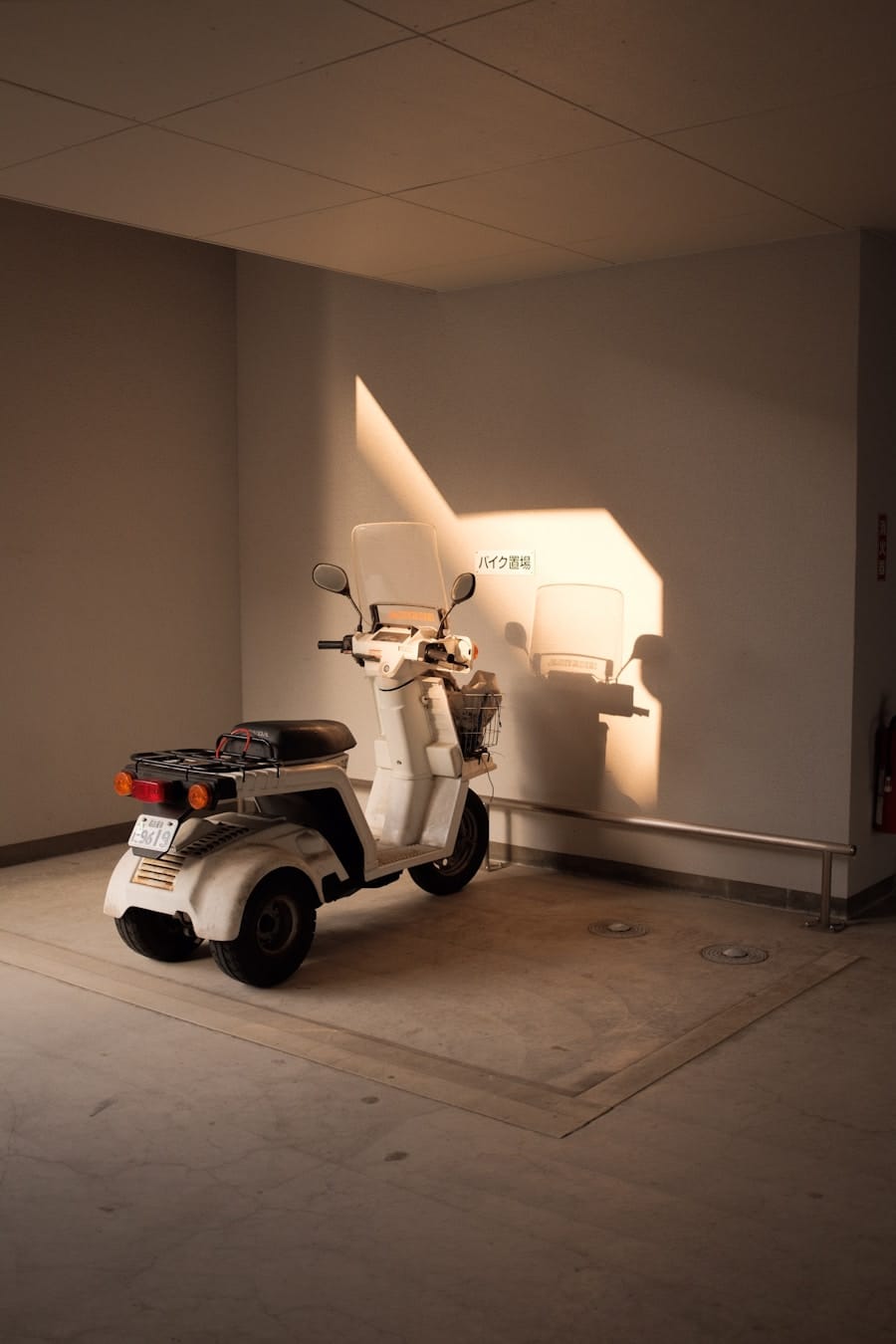The advent of autonomous robotics has ushered in a transformative era in various sectors, with sustainable urban architecture standing out as a particularly promising field. As cities grapple with the challenges of rapid urbanization, climate change, and resource depletion, the integration of autonomous robotics offers innovative solutions that align with sustainability goals. These advanced technologies are not merely tools; they represent a paradigm shift in how we conceive, design, and construct urban environments.
By leveraging robotics, architects and urban planners can create structures that are not only environmentally friendly but also more efficient and adaptable to the needs of their inhabitants. Autonomous robotics encompasses a range of technologies, including drones, robotic arms, and automated vehicles, all designed to operate with minimal human intervention. In the context of urban architecture, these robots can perform tasks such as surveying land, constructing buildings, and maintaining infrastructure.
As cities continue to evolve, the role of autonomous robotics in shaping sustainable urban landscapes will become increasingly critical.
Key Takeaways
- Autonomous robotics play a crucial role in sustainable urban architecture by revolutionizing construction, maintenance, and energy efficiency in urban environments.
- The benefits of autonomous robotics in sustainable urban architecture include increased productivity, reduced labor costs, improved safety, and minimized environmental impact.
- Autonomous robotics contribute to energy efficiency and conservation in sustainable urban architecture by optimizing building operations, monitoring energy usage, and implementing renewable energy solutions.
- The impact of autonomous robotics on construction and maintenance in urban environments is significant, as they enable faster and more precise construction, as well as proactive maintenance and repairs.
- The integration of autonomous robotics in smart cities and urban planning is essential for creating efficient, resilient, and sustainable urban environments.
The Benefits of Autonomous Robotics in Sustainable Urban Architecture
The benefits of incorporating autonomous robotics into sustainable urban architecture are manifold. One of the most significant advantages is the potential for increased efficiency in construction processes. Traditional construction methods often involve extensive labor and time, leading to delays and increased costs.
For instance, robotic arms can be programmed to assemble prefabricated components, significantly reducing the time required for on-site construction. This efficiency not only accelerates project timelines but also minimizes the environmental impact associated with prolonged construction activities.
Moreover, autonomous robotics can enhance safety on construction sites. By taking over hazardous tasks such as heavy lifting or working in precarious conditions, robots reduce the risk of accidents and injuries among human workers. This shift not only protects laborers but also allows them to focus on more complex and creative aspects of construction that require human ingenuity.
Additionally, the use of drones for site inspections and monitoring can provide real-time data on project progress, enabling better decision-making and resource allocation.
The Role of Autonomous Robotics in Energy Efficiency and Conservation
Energy efficiency is a cornerstone of sustainable urban architecture, and autonomous robotics play a pivotal role in achieving this goal. One of the primary ways robots contribute to energy conservation is through smart building technologies that optimize energy use. For example, robotic systems can be integrated with building management systems to monitor energy consumption patterns in real-time.
By analyzing data from sensors placed throughout a building, these systems can adjust heating, cooling, and lighting based on occupancy levels and environmental conditions. This dynamic approach not only reduces energy waste but also lowers operational costs for building owners. Furthermore, autonomous robots can assist in the design and construction of energy-efficient buildings by utilizing advanced materials and techniques.
For instance, 3D printing technology allows for the creation of complex geometries that enhance thermal performance while minimizing material usage. Robots can also be employed to install renewable energy systems such as solar panels or wind turbines with precision, ensuring optimal placement for maximum energy generation. By facilitating the integration of renewable energy sources into urban architecture, autonomous robotics contribute significantly to reducing reliance on fossil fuels and lowering greenhouse gas emissions.
The Impact of Autonomous Robotics on Construction and Maintenance in Urban Environments
The impact of autonomous robotics extends beyond the initial construction phase; it also plays a crucial role in the ongoing maintenance of urban infrastructure. Traditional maintenance practices often involve manual inspections and repairs, which can be time-consuming and costly. In contrast, autonomous robots equipped with advanced sensors and imaging technologies can conduct thorough inspections of buildings, bridges, and other structures with minimal disruption to daily activities.
For example, drones can be deployed to assess the condition of rooftops or facades, identifying issues such as leaks or structural damage before they escalate into more significant problems. In addition to inspections, autonomous robots can perform maintenance tasks autonomously or semi-autonomously. For instance, robotic systems can be programmed to clean solar panels or perform routine repairs on building exteriors.
This proactive approach not only extends the lifespan of urban infrastructure but also ensures that buildings operate at peak efficiency. By reducing the need for human intervention in maintenance tasks, cities can allocate resources more effectively and focus on strategic planning for future developments.
The Integration of Autonomous Robotics in Smart Cities and Urban Planning
The integration of autonomous robotics into smart city initiatives represents a significant advancement in urban planning. Smart cities leverage technology to enhance the quality of life for residents while promoting sustainability and efficiency. Autonomous robotics can serve as a backbone for these initiatives by providing data-driven insights that inform decision-making processes.
For example, robots equipped with sensors can collect data on traffic patterns, air quality, and energy consumption across urban areas. This information can then be analyzed to develop strategies for reducing congestion, improving public transportation systems, and enhancing overall urban livability. Moreover, autonomous robotics can facilitate community engagement in urban planning processes.
Interactive robotic systems can be deployed in public spaces to gather feedback from residents about proposed developments or infrastructure changes. By incorporating citizen input into planning decisions, cities can create environments that better reflect the needs and desires of their inhabitants. This participatory approach not only fosters a sense of ownership among residents but also leads to more sustainable outcomes that prioritize community well-being.
The Challenges and Limitations of Autonomous Robotics in Sustainable Urban Architecture
Despite the numerous advantages associated with autonomous robotics in sustainable urban architecture, several challenges and limitations must be addressed for widespread adoption. One significant concern is the high initial investment required for implementing robotic systems. The cost of advanced technologies such as drones, robotic arms, and AI-driven software can be prohibitive for many construction firms and municipalities.
Additionally, ongoing maintenance and updates for these systems may further strain budgets, particularly for smaller organizations. Another challenge lies in the regulatory landscape surrounding autonomous robotics. As these technologies become more prevalent in urban environments, policymakers must establish clear guidelines to ensure safety and accountability.
Issues such as liability in case of accidents involving autonomous robots or privacy concerns related to data collection must be carefully considered. Furthermore, there is a need for standardized protocols to facilitate interoperability between different robotic systems and existing infrastructure.
Case Studies of Successful Implementation of Autonomous Robotics in Sustainable Urban Architecture
Several case studies illustrate the successful implementation of autonomous robotics in sustainable urban architecture across various contexts. One notable example is the use of drones for surveying and mapping in the construction of the Hudson Yards development in New York City. Drones were employed to capture high-resolution aerial imagery that informed design decisions and facilitated efficient project management.
This innovative approach not only reduced costs but also minimized disruptions to surrounding neighborhoods during construction. Another compelling case is found in the deployment of robotic systems for maintenance tasks at the Bosco Verticale (Vertical Forest) in Milan, Italy. This residential complex features a unique design that incorporates thousands of trees and plants into its architecture.
To maintain this green infrastructure effectively, robotic systems were developed to monitor plant health and perform necessary upkeep without disturbing residents or compromising the building’s aesthetic appeal. This integration of robotics not only enhances sustainability but also serves as a model for future green architecture projects.
The Future of Autonomous Robotics in Sustainable Urban Architecture
Looking ahead, the future of autonomous robotics in sustainable urban architecture appears promising yet complex. As technology continues to advance at an unprecedented pace, we can expect even greater integration of robotics into urban environments. Innovations such as artificial intelligence and machine learning will enable robots to learn from their surroundings and adapt their behaviors accordingly, leading to more efficient operations.
Moreover, as cities increasingly prioritize sustainability in their development plans, the demand for autonomous robotics will likely grow. Urban planners will seek out solutions that not only address immediate challenges but also contribute to long-term sustainability goals. This trend may lead to collaborations between technology companies, architects, and city officials to develop tailored robotic solutions that meet specific urban needs.
In conclusion, while challenges remain regarding cost and regulation, the potential benefits of autonomous robotics in sustainable urban architecture are substantial. As we move forward into an era where technology plays an integral role in shaping our cities, it is essential to embrace these innovations thoughtfully and strategically to create resilient urban environments that prioritize sustainability and quality of life for all residents.
In a related article discussing the importance of creating training videos, the Best Software to Create Training Videos highlights the various tools and platforms available for educators and professionals to effectively communicate information. Just as autonomous robotics play a crucial role in sustainable urban architecture, the use of innovative software can enhance the learning experience and promote knowledge sharing in a digital age. By utilizing these tools, individuals can create engaging and informative content to educate others on complex topics such as robotics and urban planning.
FAQs
What is autonomous robotics?
Autonomous robotics refers to the use of robots and artificial intelligence to perform tasks and make decisions without human intervention. These robots are designed to operate independently and adapt to changing environments.
How are autonomous robotics used in sustainable urban architecture?
Autonomous robotics are used in sustainable urban architecture to improve efficiency, reduce energy consumption, and minimize environmental impact. They can be used for tasks such as construction, maintenance, and monitoring of buildings and infrastructure.
What are the benefits of using autonomous robotics in sustainable urban architecture?
The use of autonomous robotics in sustainable urban architecture can lead to increased productivity, reduced labor costs, improved safety, and minimized environmental impact. These robots can also help in the creation of more energy-efficient and environmentally friendly buildings and infrastructure.
What are some examples of autonomous robotics used in sustainable urban architecture?
Examples of autonomous robotics used in sustainable urban architecture include autonomous construction vehicles, robotic drones for building inspections, and automated systems for energy management and waste recycling. These technologies are continuously evolving and expanding in their applications.
What are the challenges of implementing autonomous robotics in sustainable urban architecture?
Challenges of implementing autonomous robotics in sustainable urban architecture include the high initial costs of technology, potential job displacement, and the need for regulations and standards to ensure safety and ethical use of these technologies. Additionally, there may be resistance to change from traditional construction and architecture practices.



